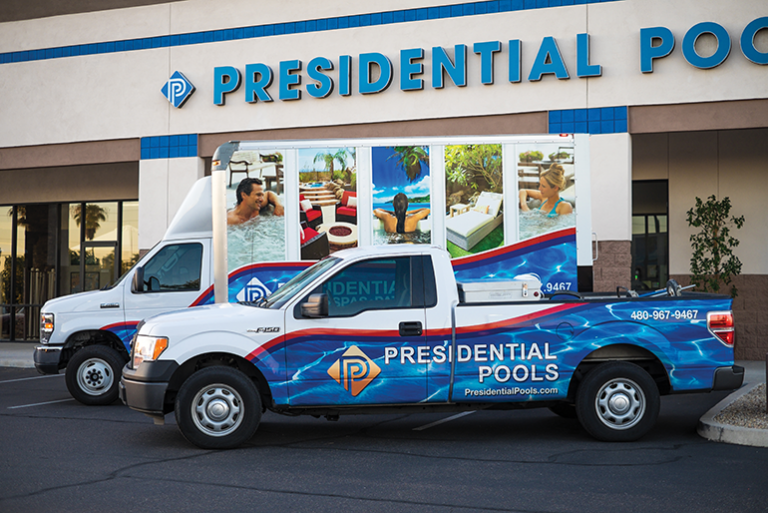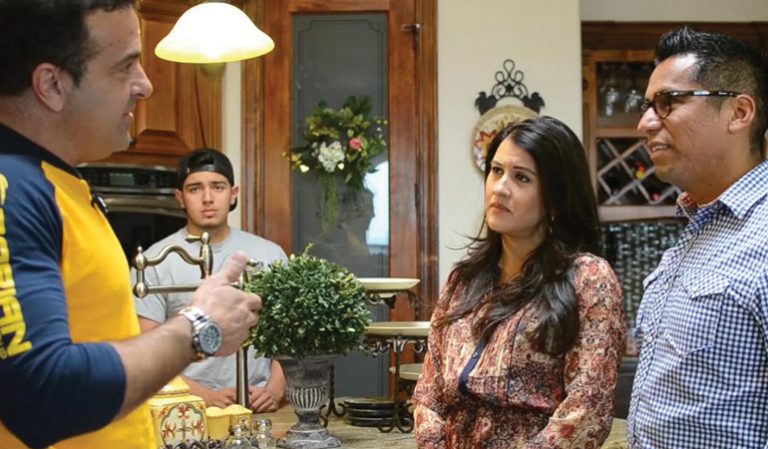Keep Talking

Everyone has Facebook on their phone — at least that’s what customers assume when they send a pool business a Facebook message. Along with that presumption comes an expectation that pool pros will see the message and respond promptly — ideally within five minutes.
This expectation is known in the marketing world as the five-minute rule and is a part of the consumer push toward conversational marketing.
“Consumers today want instant gratification,” says Jason Rosenberger, vice president of sales and business development for The Get Smart Group, a California marketing firm that works predominately with pool and spa companies. “They’ve reached out and done their part, which means they now expect you to do yours. And they want you to do it now.”
Interacting with hundreds of companies annually, consumers may not remember them all but will certainly remember the worst and the best interactions, says Kelly Michael Skelton, director of marketing for SSG Pools in North Billerica, Massachusetts and co-founder/head of content for Backyard Assist. Skelton, newly certified in conversational marketing, says it’s not enough for pool companies to compare their responsiveness to their competitors’: “We have to measure ourselves against all interactions that customers are having daily.”
Consumers expect to be called within minutes or prefer to chat in real time to get answers to their questions, Rosenberger says. “Times have changed,” he adds. “People are no longer content to wait for you to get back to them at your convenience. Take too long to respond, and you will soon find yourself with a one-star review and a lost sales opportunity.”
Answering the Call
Managing a five-minute response for every inquiry is a daunting task if not handled well, especially while leads for the pool industry are pouring in at unprecedented rates. Pam Vinje, CEO and president of Small Screen Producer, a website marketing firm in Arizona, suggests using website chatbots, which can automate responses to frequently asked questions in real time, so the customer feels it’s an active conversation.
Vinje also recommends adding a wish list option to pool company websites for sales inquiries after hours and during peak periods so customers can begin to earmark their interests. For service requests, Small Screen Producer is helping pool companies create forms on their websites for customers to detail their needs and set appointments.
“We automate using forms so that leads feel they are heard and in the queue,” she says. “If you add an appointment scheduling option into the mix, they feel even more powerful and in control of their shopping experience. It’s the peace of mind of being acknowledged.”
Rosenberger says the right tools are required to pull off the five-minute response, and that a customer relationship management system (CRM) is the place to start. “With the right automations and email drip campaigns, you can respond to every lead with a well-written and branded email that provides a useful resource for the consumer to read until someone follows up,” he says. “That same CRM system can email or text your sales team to notify them to call the lead immediately, and this is all done in well under five minutes.”
Additionally, there are multiple platforms available to include a live chat feature on pool company websites. Podium, Birdeye and Broadly are often used effectively in the pool and spa industries, Rosenberger says. Facebook also allows business owners to set up automatic responses to common questions and initial introductions via messages, Skelton says.
“Most of the time, consumers still want to [see the product] before signing, but a consumer who gets an immediate response via live chat and has all their questions answered is almost always going to buy,” Rosenberger says.
Setting Boundaries
Skelton says the obvious way a company can improve responsiveness is to hire someone whose job is initial contact. If the company’s budget allows hiring team members for this task, it’s not cost beneficial or reasonable to expect that team to work 24/7.
“Publishing business hours upfront on social media, your website and Google My Business can set a boundary that your staff is available during those hours and not otherwise,” Skelton says.
Rosenberger suggests having auto messages on social media and in chatbots that tell customers it’s after hours, asking them to leave contact information for follow-up the next business day. “You can have the system answer FAQs for you or consider hiring an after-hours answering service,” he adds. “Oftentimes, there is an eager salesperson who responds even after hours if they are available. There are options to be explored.”
SSG Pools creates blog posts or landing pages to help answer common questions as a means of serving customers when no one is available; last year, SSG’s help blog received over 75,000 page views. The company lets customers on all platforms know its hours are 9 to 5 — however, the team may still respond after hours.
“Using tools like Broadly and having social media apps on our personal phones, it’s easy to answer quick questions or confirm contact information for the following day, even after hours or on weekends,” Skelton says. “Last year, we had over 1,150 conversations via our web chat feature. Our marketing staff believes in being available for customers whenever possible, and checks our web chats and social media messages multiple times every day, not just during business hours.”
Watch Your Tone
While the five-minute response is an important element of conversational marketing, the way the conversation is handled counts for a lot as well.
“Just be yourself,” Rosenberger says. “Use the customer’s name and be polite. Show appreciation and give them your full attention. Consider the pace of the conversation.”
For example, Rosenberger adds, if a customer asks one question and you respond with five different things, the customer could get overwhelmed. It needs to be back-and-forth communication where the customer sets the speed.
More than anything, customers want direct, honest answers, Skelton says. “We largely allow the customer to set the tone of the conversation when it comes to things like jokes or emojis,” he says. “If they use emojis, we will too. Our team matches their level of excitement or curiosity. Every customer is unique, and while it’s hard to fully understand tone via digital channels, we do our best to be appropriate and friendly.”






